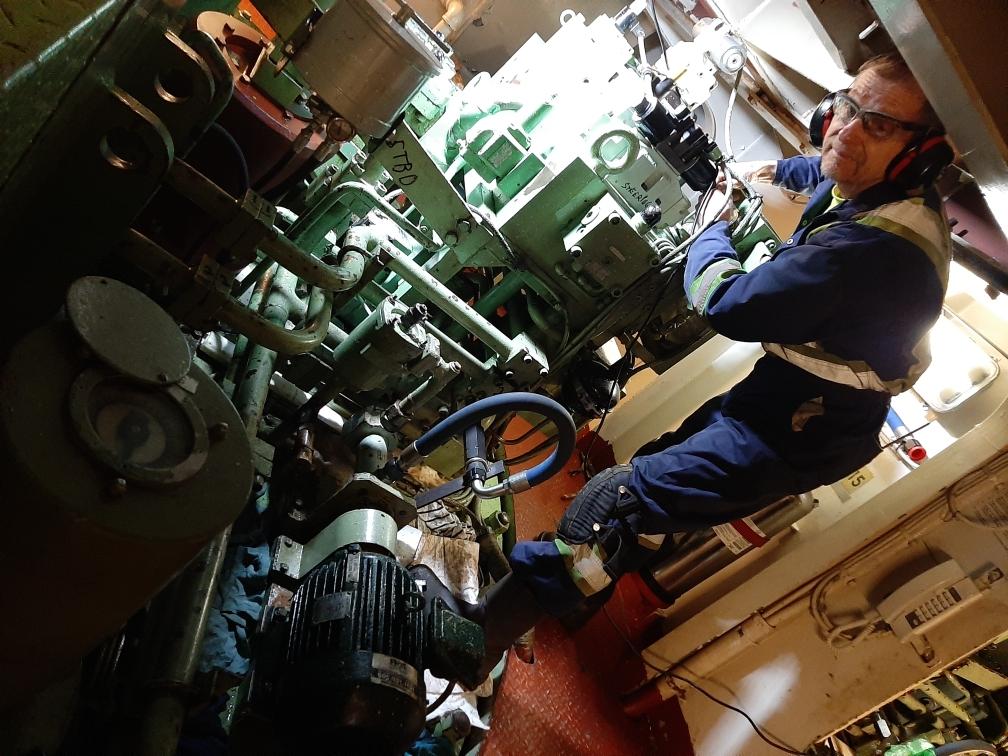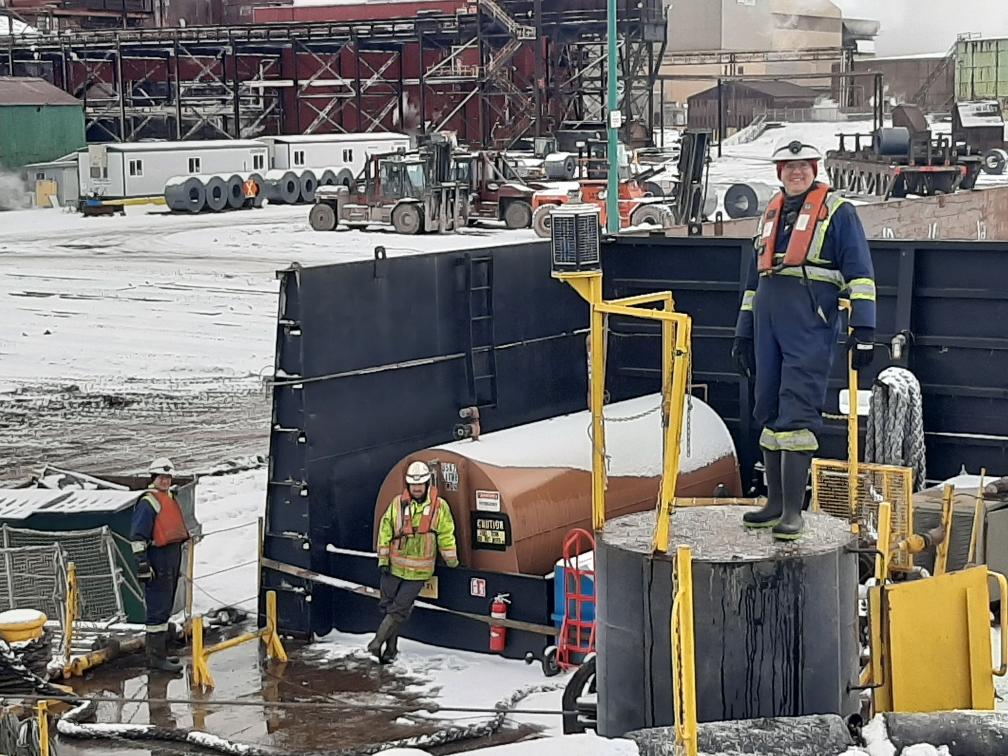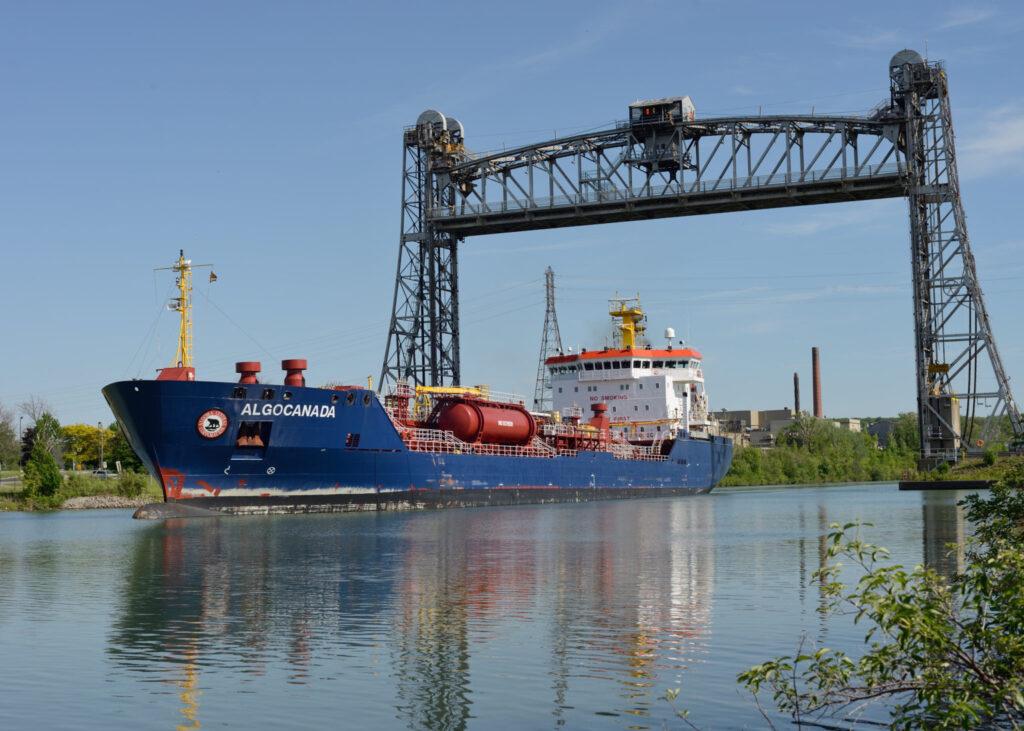
It isn’t easy to social distance on a tug. The Sharon M, just under 35 metres long, regularly pushes a barge carrying cargo — on this trip loaded with steel coils and plates from Algoma Steel in Sault Ste. Marie destined for U.S. cities for auto production.
Aboard the Sharon M, the interior is much smaller than the giant bulkers that ply the Great Lakes. The hallways are narrower and the nine-person crew share accommodation and three bathrooms.
But that hasn’t stopped the vessel’s operator McKeil Marine from devising ways to protect the crew during the COVID-19 pandemic. One of the most important steps has been thoroughly vetting crew members before they arrive for duty, including temperature checks, and organizing crew rotations so the same crew work together for five weeks and then all leave together for their five weeks off.
When Captain Ray Davis and his crew arrived for duty, the chief engineer had already been doing winter repair work on the tug for weeks. But he volunteered to stay an additional five weeks so that he could continue to rotate with the crew during the pandemic.
“We have just a great group of guys. We’ve been on the same boat for five years,” says Captain Davis. “They are really hard-working and they buy into our team within a team approach, which really helps when you’re dealing with a situation like COVID-19.”



Once on board, after every watch, crew members have to wipe down all the surfaces, door handles, navigation equipment and washrooms. They respect the 2m distance on the vessel where ever they can. There is very little ship to shore interaction as the barge is loaded/unloaded by stevedores using forklifts.
At the end of their rotation, the departing crew wash down cabins and the entire tug in full PPE. Crew changes are only done in Canada, and not in the United States, with special provisions made for travelling home.
“We stay together the whole five weeks, with no one else coming on board,” says Davis. “We all leave together and once at home we self-isolate for two weeks. We also self-isolate for the two weeks before we come back. It’s tricky to do when you have family at home but we understand that we need to know that everyone is healthy before they come back.”
Captain Davis’ crew are a close-knit group, most of which come from Newfoundland. “Everybody is doing daily calls to their loved ones back home,” he says. “A couple of us have wives on the frontlines, including my lead seaman. My wife works in a hospital. So, we worry about our families back home.”
But they use humour and good food to get through these more difficult times.
“The way we deal with depression here is that we eat a lot,” jokes Captain Davis. “We have a great cook. I don’t think any of us eat as good at home as we do on this tug.”
And ultimately, they take pride in “helping to keep the economy rolling.”
“We’re happy to be working. We hope what we’re doing can help make a difference. That’s in the back of our minds.”

Captain James Ryan talks about the new way of life for mariners aboard Great Lakes freighter CSL Assiniboine during COVID-19.

Captain Peter Norman on the steps being taken aboard the AlgoCanada tanker to ensure crew changes continue during COVID-19